Project Description
The client, a major auto-care products company, was going through a challenging transition period after splitting from their parent company. They had invested in an ERP but needed a coherent strategy to start the implementation process for business intelligence and reporting.
They had invested in an ERP but needed a coherent strategy to start the implementation process for business intelligence (BI) and reporting. With the ERP, the client had established a solid technical foundation for transactional processing using a hosted SAP environment with third-party support and basic BI tools were in place, but implementation was incomplete. User adoption was low due to inefficient and ineffective reporting. There was also a lack of cross-functional awareness of information usage and impact, and data quality issues were causing a lack of confidence in the data that was available.
The client chose to engage Chateaux because other vendors had not demonstrated an ability to deliver architecture and strategy at the enterprise level. Chateaux was able to offer both enterprise architecture and strategy services, as well as scale the size, scope, and resource plan to the client’s needs with onsite resources.
The key steps taken to complete the project followed our Define, Design, Deliver methodology. Initially, the Chateaux team worked with the client to establish a schedule of interviews, facilitated working sessions, checkpoints, and key principals. They then moved to the design phase, establishing templates, techniques, and topics for the interviews, working sessions, and analyses. The delivery phase included conducting interviews with over forty client employees and synthesizing the results into observations, key issues, business impacts, business priorities, and strategic guidelines. Strategy and high-level planning sessions were conducted to quickly turn this information into a form that could be used to arrive at the key outcomes and deliverables for the next three years. The outcomes and deliverables were incorporated into a detailed first year plan and timeline presented to the executive management team. The client was involved throughout the whole process, from initial interviews, to drafting the strategy, to developing the road map. Chateaux emphasized business priorities and facilitated working sessions that encouraged and required a high level of client engagement.
Chateaux’s approach for this project involved more than just regurgitating back what the client had told us. We know the importance of putting forward tangible, pragmatic suggestions that the client can react to and critique. This method helped move the project along quickly and ensured that the whole management team was fully engaged in developing the strategy.
The project established the momentum needed to successfully rollout a BI solution in the client’s organization. Chateaux mitigated any issues by using a team facilitation approach to turn around results in real-time, rather than as a follow-up exercise. The Chateaux team maintained constant communication with the client and met all deadlines and checkpoints. This collaborative approach produced a set of recommendations that were extremely well received by the client as evidenced by their immediate approval to fund the implementation phase and put the strategic plan into motion.






